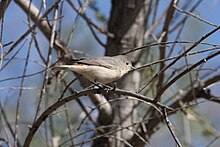Tue Dec 30, 2014 1:38AM
A half male, half female rare northern bird has been seen with a split-colored body, scientists say.
Ornithologists Brian D. Peer and Robert W. Motz observed the rare northern cardinal (Cardinalis cardinalis) with gynandromorphism -- exhibiting both male and female characteristics-- between 2008 and 2010 and published their findings in the latest issue of The Wilson Journal of Ornithology.
 |
| A gynandromorph cardinal observed in Texas in 2011. (file photo) |
The bird’s condition gives its feathers the distinctive coloring of red male plumage on one half and brownish-grey female plumage on the other.
During their observation, the researchers noted that the cardinal never paired up with others of its species or never sang, but was not targeted by other birds for its unusual appearance.
Gynandromorphy is the result of the incomplete segregation of sex chromosomes after fertilization, and can also occur in butterflies, crustaceans, and arachnids.








